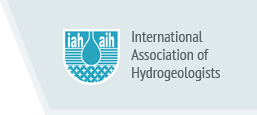About transboundary aquifers
Knowledge capsules on transboundary aquifers
These capsules are intended to shed light on some key concepts used in TBA science, policy and practice.
Aquifer
Many definitions exist on the concept of “aquifer”; these may be engineering, managerial, environmental, geographical, or political definitions. In fact, any water-saturated body of geological material from which enough water can be drawn at a reasonable cost for the purpose required, can be considered as “aquifer”. An aquifer is only a relative term and is best illustrated by extreme examples. An aquifer in an arid region required to supply water to a single farm, for example, may be adequate if it can supply 1 m3/day. Such an aquifer would not be considered sufficient by any industry looking for cooling water in the order of 10,000 m3/day. An aquifer is commonly thought of as water-bearing material from which water is most easily extracted. An aquifer is by no means equivalent to a single geologic, lithographic, or stratigraphic unit; in fact, two contiguous layers of sand and limestone may form a single aquifer.
Transboundary aquifer
This is a relatively new concept, coined from the need to share an aquifer that has been divided artificially by two or more jurisdictions. The definition of aquifer provided above applies in this case too, but in the transboundary aquifer case, jurisdictional boundaries are added to the natural boundaries of the aquifer. The ISARM programme launched in 2001 by UNESCO and the IAH has so far identified 600 transboundary aquifers and/or groundwater bodies. Two examples of contrasting conceptual definitions of aquifers are the Groundwater Bodies in Europe, and the Administrative Aquifers in Mexico; in the former, aquifers are defined by jurisdictional (international) boundaries, in the latter, aquifers are defined by administrative boundaries (national); in both cases the natural boundaries of aquifers are neglected in the management.
Fossil water
Fossil water or palaeowater is an ancient body of water that has been contained in some undisturbed space, typically groundwater in an aquifer, for millennia under climatic conditions different from the present. Some of the aquifers containing fossil water are hundreds of meters deep and underlie vast areas of land such as the Nubian aquifer shared by Sudan, Libya, Egypt, and Chad; and the Ogallala aquifer in the USA. Modern (at least not since the last climate transition of the Pleistocene-Holocene, 10k yrs ago) infiltration does no longer recharge aquifers, although a multi-layered aquifer system may contained both modern infiltration and fossil water.
Groundwater age
The groundwater age is the time elapsed since a water parcel was recharged in the subsurface until it reaches a location where it is sampled. The groundwater residence time is the time it takes for particles of water to travel from recharge at the water table to discharge area of the aquifer. Age “tracers” allow to estimate the age of young (3H, T/3He, CFC, SF6), old (39Ar, 14C,) and very old groundwater (36Cl, 81Kr). Groundwater age data can be used to determine the flushing time scale of contaminants within an aquifer, or constrain groundwater flow models.
Transboundary Aquifer -vs- Transboundary Groundwater
A hotly debated subject has emerged under the context of transboundary aquifers (TBA). When planning any type of arrangement to manage an aquifer spanning two or more jurisdictions, MoU, Minutes, legally binding agreements, etc., what should be managed—the aquifer or the groundwater flowing through the aquifer? Is there a trend of misunderstanding between the two terms? In the realm of hydrogeology, there is no dispute on the existence of clarity about the differences between groundwater and aquifers. However, this does not seem to be the case for the law and policy literature, which are strong components of any type of agreement to share a TBA (Rivera, 2021). A new vocabulary, new concepts, and more accuracy in terminology have emerged over the last 20 years under ISARM (Internationally Shared Aquifer Resources Management). However, there are disagreements because cultural, political, economic, and social factors differ around the world. In addition to its natural boundaries, jurisdictional boundaries need to be added to the TBA. As of today, there is no single solid response to this debate. Rivera (2021) suggested that “Management of groundwater at the scale closer to the jurisdictional boundaries, should be chosen rather than the full aquifer” but this is still open to discussion.
Transboundary zoning: to zone or not to zone
When dealing with a shared aquifer with groundwater crossing from one jurisdiction to the other, we should keep in mind the artificial (jurisdictional) boundary. For example, if we need to build a numerical model of the aquifer for management purposes, we would need to add an additional boundary condition to it: a jurisdictional boundary. This type of boundary condition does not exist in numerical models. In that case, we are faced with the issue of selecting the best optimal area for shared management. So, should we zone in in the area for managing closer to the jurisdictional boundary only? Or should we consider the full extent of the complete aquifer? If we concentrate in the most urgent and most important areas, e.g., closer to the artificial boundary, we could make use of a specific units for management purposes: a groundwater flow system, the radius of influence, a capture area, a pressure compartment, groundwater age, etc. To do that correctly, however, the dynamics of groundwater within the aquifer (time and space scales) must be well understood closer to the jurisdictional boundary. Further, to complement the knowledge of groundwater dynamics, new elements and/or variables need to be added, e.g., social, economic, and political needs. Unfortunately, there are currently no available guidelines that detail how to prioritize and estimate these zones within TBAs to inform and guide groundwater policy and decision makers.
Sustainable use of groundwater within a transboundary aquifer context
It is not easy to define the sustainable yield of an aquifer system; there is neither universal consensus, nor a single definition. In many cases, programs for groundwater management pay attention to the integration of groundwater and surface water in the planning process. Those plans usually discuss issues of demand and yield, but never directly address a fundamental issue behind the plans—how to define sustainable yield of an aquifer system. If we add the fact that the aquifer system is shared by two jurisdictions with very different approaches for water management, then defining and adopting a sustainable yield and use of that aquifer becomes mind boggling. One approach for designing a sustainable groundwater development within a transboundary aquifer context is to build a conceptual model, or framework, with a comprehensive balance of the aquifer system. Such a development would be appraised by the balance between the transboundary aquifer storage (the groundwater resource) and the social, environmental and economic benefits for the countries sharing the TBA system. To assess storage,on the one hand, detailed estimates of natural indirect, and artificial recharge, and groundwater in storage, should be assessed. The benefits, on the other hand, groundwater supply (drinking water), groundwater discharge (rivers, springs, wetlands, ecosystems), and groundwater abstractions (agriculture and industry) should be measured or estimated. Theoretically, this is feasible, but it requires a great deal of collaboration in working together to create something new in support of a shared vision. Such a comprehensive approach, unfortunately, has yet to be tested. We will report back on this important TBA issue as new study cases are completed and publicly available.
Hydrogeological Unit – HGU
A hydrogeological unit is defined as any soil or rock unit or zone that by virtue of its hydraulic properties has a distinct influence on the storage or movement of groundwater. HGUs may exist at various scales: regional, contextual, unit, or as a single aquifer. One HGU may contain more than one aquifer. Thus, when delineating transboundary aquifers, HGUs should be clearly identified as a TBA, or as a hydrogeological unit, or a framework, where a transboundary aquifer or aquifer systems are present.
Hydrostratigraphic unit – HSU
Body of sediment and/or rock characterized by groundwater flow that can be demonstrated to be distinct under both unstressed (natural) and stressed (pumping) conditions, and is distinguishable from flow in other HSUs. An HSU is distinguished and characterized by its porosity and permeability. Delineation of these units subdivides the geologic framework into relatively more or less permeable portions and thus aids in definition of the groundwater flow systems. Hydrostratigraphic units may include aquitards, which should be included in the groundwater water flow system as they may pose significant barriers to the vertical flow of groundwater. This is an important aspect to consider when dealing with transboundary aquifer systems, which may significantly affect the regional flow of groundwater at the scale of the jurisdictional boundary.
Transboundary Aquifer Mapping
The mapping of a transboundary aquifer is no different from the mapping of a “normal” aquifer. In general, geology and hydrogeology are used to map an aquifer, mostly by defining its natural boundaries (or boundary conditions) in two horizontal dimensions. More advanced mapping of aquifers includes the vertical dimension too with detailed hydrostratigraphy. Further, a map of an aquifer may include connections with surface bodies of water (rivers, lakes, wetlands), although this is not always the case. In the case of a transboundary aquifer, the mapping includes the jurisdictional, not natural, boundary, mostly in two horizontal dimensions (what we “see”). Many of the 468 TBAs inventoried by ISARM include maps of TBAs only in the 2D-horizontal dimensions.
Transboundary Aquifer Assessment
Contrary to aquifer mapping, aquifer assessment is a full characterization of the aquifer in three dimensions including the dynamics of groundwater through the aquifer and groundwater stored in the aquifer. In this context, transboundary aquifer assessment is more quantitative than mapping. The minimum number of tasks that should be covered by a full transboundary aquifer assessment are: hydrogeological boundaries, hydrological boundaries, groundwater flow rates, groundwater volume in storage, groundwater use, aquifer recharge and aquifer discharge, groundwater flow regime (steady state and transient state), groundwater residence time in the aquifer, groundwater
quality, sustainable aquifer yield, and a 3D hydrogeological model. These are the attributes that should be covered in the assessment of any aquifer, transboundary or not. However, if the aquifer is transboundary, transboundary fluxes need to be added, and a jurisdiction boundary condition should be added to the 3D hydrogeological model. Currently (2023), this type of boundary condition does not exist in numerical models. So, countries sharing the TBA should decide on how to include this boundary condition in the numerical model.



